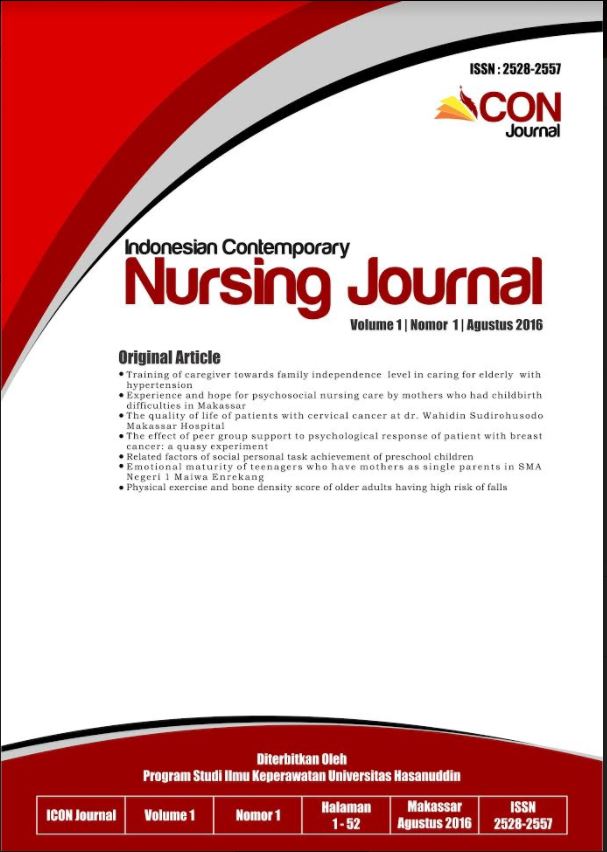Effectiveness of Clinical Learning Methods in Improving Clinical Skills of Nursing Students: Systematic Review
Abstract
Introduction: Clinical skills are an important indicator that must be achieved in the application of clinical learning to nursing students. Method: The design of this study is a systematic review. This article was prepared in accordance with the PRISMA method. Search for articles using the Pubmed, Proquest, ScienceDirect, and Ebsco databases. Research questions were prepared using the PICO method, and search keywords were based on a database in MeSH Term. The inclusion criteria in this review article are the focus on the application of clinical learning methods, applied to nursing students, the type of Randomized Controlled Trial research, influencing clinical skills, and published since 2011-2020. There were 2,078 articles found. The included articles were analyzed using the Critical Appraisal Skills Program. To assess the quality of articles used the Effective Public Health Practice Project. Result: There are six articles included in this study. From the results of the critical assessment in the included article, the application of Flipped Learning, Video Skills, Interactive Clinical Nursing Skills Mobile Applications, High-Fidelity, Clinical Teaching Associates, End-of-Life Care can significantly improve the clinical skills of nursing students. Conclusion: The clinical learning methods applied can improve the clinical skills of nursing students. Therefore, these clinical learning models can be recommended in nursing education.Downloads
Download data is not yet available.
Dimensions
Published
2020-08-25
How to Cite
Sapeni, M. A.- amin R., Erika, K. A., & Saleh, A. (2020). Effectiveness of Clinical Learning Methods in Improving Clinical Skills of Nursing Students: Systematic Review. Indonesian Contemporary Nursing Journal (ICON Journal), 5(1), 9-20. https://doi.org/10.20956/icon.v5i1.9795
Issue
Section
ARTICLES
Copyright & Licensing
Authors who publish with this journal agree to the following terms:
Authors retain copyright and grant the journal right of first publication with the work simultaneously licensed under a Creative Commons Attribution License that allows others to share the work with an acknowledgement of the work's authorship and initial publication in this journal.
Authors are able to enter into separate, additional contractual arrangements for the non-exclusive distribution of the journal's published version of the work (e.g., post it to an institutional repository or publish it in a book), with an acknowledgement of its initial publication in this journal.
Authors are permitted and encouraged to post their work online (e.g., in institutional repositories or on their website) prior to and during the submission process, as it can lead to productive exchanges, as well as earlier and greater citation of published work (See The Effect of Open Access).
Authors retain copyright and grant the journal right of first publication with the work simultaneously licensed under a Creative Commons Attribution License that allows others to share the work with an acknowledgement of the work's authorship and initial publication in this journal.
Authors are able to enter into separate, additional contractual arrangements for the non-exclusive distribution of the journal's published version of the work (e.g., post it to an institutional repository or publish it in a book), with an acknowledgement of its initial publication in this journal.
Authors are permitted and encouraged to post their work online (e.g., in institutional repositories or on their website) prior to and during the submission process, as it can lead to productive exchanges, as well as earlier and greater citation of published work (See The Effect of Open Access).
Most read articles by the same author(s)
- Hasnah Hasnah, Hapsah Hapsah, Silvia Malasari, Ariyanti Saleh, Akbar Harisa, Nurses’ Experience of Dealing With Patients’ Aggressive Behaviour in Psychiatric Emergency Ward of Hospital in South Sulawesi , Indonesian Contemporary Nursing Journal (ICON Journal): Volume 3 No. 1 Agustus 2018
- Kadek Ayu Erika, Mulhaeriah Mulhaeriah, Nurul Arifah Amir, The Relations between Birth Weight and The Growth of Children under Five in Puskesmas Goarie Subdistrict Marioriwawo Regency Soppeng , Indonesian Contemporary Nursing Journal (ICON Journal): Volume 3 No. 2 Februari 2019
- Faradiba Faradiba, Ariyanti Saleh, Akbar Harisa, Emotional Maturity of Teenagers Who Have Mothers as Single Parents in SMA Negeri 1 Maiwa Enrekang , Indonesian Contemporary Nursing Journal (ICON Journal): Volume 1 No. 1 Agustus 2016
- Hapsah Hapsah, Wa Ode Nur Isnah Sabriyati, Andi Tenri Rustam, Anugrahwati Datu Mikan, Nurlaila Fitriani, Ariyanti Saleh, Hamisah Hamisah, Overview of Religious Activities of Students in Makassar in the Third Year of Covid-19 , Indonesian Contemporary Nursing Journal (ICON Journal): Vol. 7 No. 2 (2023): Volume 7 No. 2 Februari 2023

